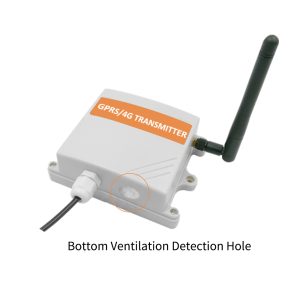-
The difference between gas sensors
- Gas sensors are critical tools used to detect and monitor the presence of various gases in the environment. They play a crucial role in ensuring safety, preventing accidents, and maintaining air quality in a wide range of applications. In……
- Chat Online
-
Description
Gas sensors are critical tools used to detect and monitor the presence of various gases in the environment. They play a crucial role in ensuring safety, preventing accidents, and maintaining air quality in a wide range of applications. In this article, we will explore the different types of gas sensors available in the market, their working principles, calibration methods, and their applications. Understanding these differences will help in selecting the appropriate gas sensor for specific requirements.

Types of Gas Sensors:
Gas sensors come in different types, each designed to detect specific gases or operate under different conditions. Some common types include:
Electrochemical Sensors:
These sensors utilize an electrochemical reaction to detect gases such as carbon monoxide (CO), hydrogen sulfide (H2S), and oxygen (O2). They consist of electrodes immersed in an electrolyte, and when gas molecules interact with the electrodes, a chemical reaction occurs, generating an electrical signal.
Catalytic Combustion Sensors:
These sensors are primarily used to detect combustible gases like methane (CH4) and propane. They contain a catalytic element that heats up in the presence of combustible gases, causing oxidation and generating a measurable change in electrical conductivity.
Infrared Sensors:
Infrared sensors detect gases based on their absorption of infrared light at specific wavelengths. Each gas has a unique absorption pattern, allowing the sensor to identify and measure its concentration accurately. Infrared sensors are commonly used to detect hydrocarbons, carbon dioxide (CO2), and refrigerant gases.
Semiconductor Sensors:
Semiconductor gas sensors are cost-effective and versatile. They operate by utilizing the change in electrical conductivity of a semiconductor material when exposed to specific gases. These sensors are used for detecting a wide range of gases, including volatile organic compounds (VOCs), ammonia (NH3), and nitrogen dioxide (NO2).
Working Principles:
Gas sensors operate based on various principles, depending on their type. However, most gas sensors follow similar operational steps:
Gas Detection:
Gas molecules interact with the sensing element of the sensor, triggering a chemical or physical reaction.
Sensing Element Response:
The sensing element undergoes a change in electrical conductivity, resistance, or other measurable parameters due to the interaction with the gas.
Signal Processing:
The electrical signal from the sensing element is processed and amplified by the sensor's electronics.
Output Display:
The processed signal is displayed as a gas concentration value or an alarm indication, providing real-time information about the gas presence.
Calibration:
Calibration is crucial for ensuring the accuracy and reliability of gas sensors. It involves comparing the sensor's output to a known reference gas concentration. Calibration can be performed through two main methods:
Span Calibration:
In this method, the sensor is exposed to a known gas concentration that represents the upper limit of the measurement range. The sensor's response is adjusted to match the reference value, ensuring accurate reading across the entire measurement range.
Zero Calibration:
Zero calibration involves exposing the sensor to a clean air or gas environment with no target gases present. This step adjusts the sensor's baseline reading and compensates for any drift or offset, ensuring accurate readings in the absence of target gases.
Applications:
Gas sensors find extensive applications in various industries and settings:
Industrial Safety:
Gas sensors are used in factories, chemical plants, and refineries to monitor the presence of toxic, flammable, or explosive gases, ensuring worker safety.
Environmental Monitoring:
Gas sensors are employed in environmental monitoring systems to measure air quality, detect pollutants, and analyze emissions from industrial processes.
Residential Safety:
Gas sensors are installed in homes to detect carbon monoxide (CO) and natural gas leaks, protecting residents from potential health hazards and gas-related accidents.
Automotive Industry:
Gas sensors play a crucial role in automotive emissions control systems, ensuring compliance with emission standards and monitoring exhaust gases.
Healthcare:
Gas sensors are utilized in medical settings to monitor anesthesia gas levels, detect volatile organic compounds (VOCs) in hospitals, and analyze exhaled gases for diagnostic purposes.

Conclusion:
Gas sensors come in different types, each designed to detect specific gases or operate under different conditions. Understanding the differences between gas sensors, including their types, working principles, calibration methods, and applications, is crucial for selecting the appropriate sensor for specific requirements. By utilizing gas sensors effectively, we can create safer work environments, protect public health, and mitigate potential risks associated with the presence of hazardous gases.
-
Recommend:
-
-
The Role of Gas Detectors in Safeguarding Public Health
Gas detectors play a crucial role in ensuring public safety…
-
Enhancing Safety Measures: Gas Detection Devices for Improved Workplace Security
Introduction: Ensuring workplace safety is of paramount imp…
-
Gas detectors are essential devices used to detect and moni…
-
Gas sensors are electronic devices that detect, measure, an…
-
 : +86 155 8830 2704
: +86 155 8830 2704 : jxdziot@gmail.com
: jxdziot@gmail.com
